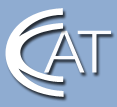Explore high-paying careers in clean, high-tech Connecticut manufacturing.

Educators: Externships
Externship Summary - 2007
Dave Salonia, Project Lead the Way
Berlin High School
Host Organization: Trumpf, Inc.
Project: Sheet Metal Design and Production
Task Abstract: Develop and create a flat pattern design of a sheet metal box.Â
Task Objectives: Students will understand sheet metal concepts and some of the equipment and processes used in today’s sheet metal manufacturing facilities.
Students will be able to analyze a template of a sheet metal part and create a flat pattern which can then be used to fabricate the part. After a solution has been achieved, the students will then model the part using the Computer Aided Design software and sheet metal package.
Essential Understandings/Questions: Name some household items that use sheet metal parts. Pay attention to how these parts are formed, have folds, bends, holes in them, or are welded. What types of finishes do these parts have?
What is the most common material that’s used in the sheet metal industry today? Why is this material so widely used? Name some other materials that are used in sheet metal.
Task Description: Students will develop a paper-cut flat pattern model of a sheet metal box using a pre-punched template that was actually created on a laser cutting machine.Â
After the student has figured out the best way to create the flat pattern with the paper, the student will then create a flat pattern layout using the Computer Aided Design system’s sheet metal package. After the student has developed an acceptable design, the flat pattern will be evaluated by the teacher.
The student will become familiar with key terms and answer key questions that are designed to reinforce their learning.
Students will go on a field trip to Trumpf, Inc. to observe the manufacture of laser cutting equipment and see their flat pattern model being made out of sheet metal. Finally, the student will keep an engineering notebook that traces all design work, sketches, observations, calculations and conclusions.
Resources Required: Powerpoint slides, sheet metal pattern template, Computer Aided Design system, pencil and engineering notebook.
Student Work Types: Create a model sheet metal and field trip to Trumpf, Inc..
Prior Learning Required: A basic understanding of Computer Aided Design and sheet metal design is required. Teacher would need to demonstrate the use of the Computer Aided Design system as a sheet metal development tool.
Context within which work is produced: The work was produced within an actual engineering environment with input and counsel from several different engineers and engineering management.
Individual or Group Work: Activities are designed for individual students. One student per Computer Aided Designsystem.
Special Needs: Computer Aided Design system (3D) with sheet metal development package, paper template of the sheet metal pieces for student assembly into a flat pattern.
Educator Comments: This was a very successful externship for many reasons. First, several engineers were actively engaged in helping to develop the lessons. The externship gave them an opportunity to learn about our pre-engineering curriculum and become part of the learning process for high school students, thus establishing a future networking relationship. All of the engineers involved were most cooperative and donated a significant amount of time to the externship despite their busy schedules. Secondly, the students will get an opportunity to interact with members of Trumpf, Inc. to more fully understand company needs. We are looking forward to future field trips at Trumpf, Inc., including a follow-up to the lesson and a separate shadowing event in the future.
Â
Thirdly, as a teacher of engineering and technology education, I had an opportunity to work in a large company and learned many aspects of how it operates so I can transfer this knowledge to the students. So in this type of experience, the manufacturer, the student and the teacher all gain knowledge. It is a win-win-win situation! We agreed that this externship would begin an on-going “partnership” whereby Trumpf, Inc., the teacher and the students continue to network in the future. (Summary Report)





